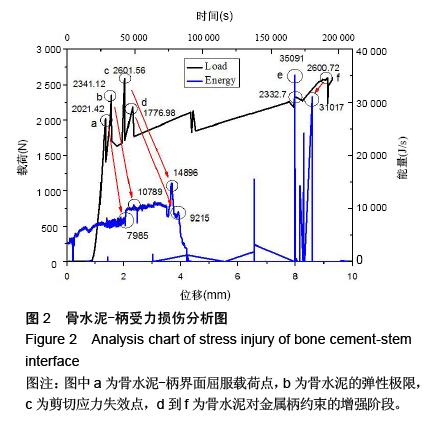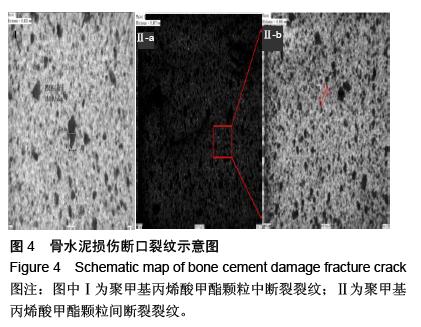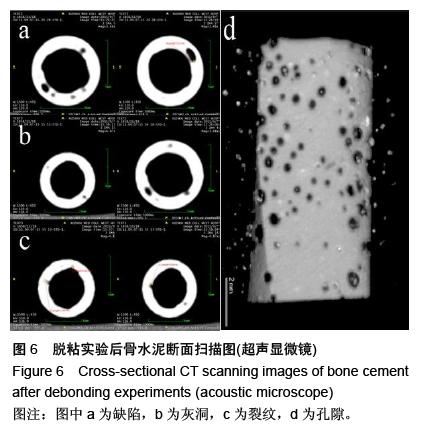| [1] Canales V,Panisello JJ,Herrera A,et al.Extensive osteolysis caused by polyethylene particle migration in an anatomical hydroxyapatite-coated hip prosthesis: 10 years' follow-up.J Arthroplasty. 2010;25(7):1115-1124.
[2] Andreykiv A,Janssen D,Nelissen R,et al.On stabilization of loosened hip stems via cement injection into osteolytic cavities.Clin Biomech.2012;27:807-812.
[3] Wang T,Pelletier MH,Bertollo N,et al.Cement-implant interface contamination: possible reason of inferior clinical outcomes for rough surface cemented stems. Open Orthop J. 2013; 7: 250-257.
[4] Cip J,von Strempel A,Bach C,et al.Implication of Femoral Stem on Performance of Articular Surface Replacement (ASR) XL Total Hip Arthroplasty.J Arthroplasty 2014;29:2127-2135.
[5] Clauss M,Luem M,Ochsner PE,et al.Fixation and loosening of the cemented Muller straight stem: a long-term clinical and radiological review.J Bone Joint Surg Br. 2009; 91(9): 1158-1163.
[6] Thakore M,Ledger R,Yanoso-Scholl L,et al. Nondestructive evaluation of bone cement and bone cement/metal interface failure.J Biomed Mater Res B Appl Biomater. 2010; 92(2): 420-429.
[7] Hunt S,Stone C,Seal S.Timing of femoral prosthesis insertion during cemented arthroplasty: cement curing and static mechanical strength in an in vivo model.Can J Surg. 2011;54(1):33-38.
[8] Gammoudi K,Kharrat M,Dammak M.Experimental and Numerical Analyses of the Pull-out Response of a Steel Post/Bovine Bone Cementless Fixation. J Bionic Eng. 2012;9:501-507.
[9] Sevimay M, Turhan F, Kilicarslan M, et al. Three- dimensional finite element analysis of the effect of different bone quality on stress distribution in an implant-supported crown. J Prosthet Dent.2005;93: 227-234.
[10] Sangiorgio SN,Longjohn DB,Dorr LD,et al.Challenges in relating experimental hip implant fixation predictions to clinical observations.J Biomech.2011;44:235-243.
[11] Haq RU,Park KS,Yang HK,et al.Displacement of a cemented femoral stem during attempted closed reduction of a dislocated total hip arthroplasty.J Arthroplasty. 2010; 25:658.e11-e15.
[12] Crowninshield R.Femoral hip implant fixation within bone cement.Oper Tech Orthop.2001;11:296-299.
[13] Akiyama H,Yamamoto K,Kaneuji A,et al.In-vitro characteristics of cemented titanium femoral stems with a smooth surface finish.J Orthop Sci. 2013;18:29-37.
[14] Hosein YK,King GJ,Dunning CE.The effect of stem surface treatment and material on pistoning of ulnar components in linked cemented elbow prostheses. J Shoulder Elbow Surg.2013;22(9):1248-1255.
[15] Lin DJ,Ju CP,Huang SH,et al.Mechanical testing and osteointegration of titanium implant with calcium phosphate bone cement and autograft alternatives.J Mech Behav Biomed Mater. 2011;4:1186-1195.
[16] Slane J,Vivanco J,Ebenstein D,et al.Multiscale characterization of acrylic bone cement modified with functionalized mesoporous silica nanoparticles.J Mech Behav Biomed Mater. 2014;37:141-152.
[17] Méndez J,Aguilar MR,Abraham GA,et al.New acrylic bone cements conjugated to vitamin E: curing parameters, properties, and biocompatibility.J Biomed Mater Res. 2002;62(2):299-307.
[18] Koh I,López A,Helgason B,et al.The compressive modulus and strength of saturated calcium sulphate dihydrate cements: Implications for testing standards. J Mech Behav Biomed Mater.2014;34:187-198.
[19] Pal B,Gupta S,New AM.Influence of the change in stem length on the load transfer and bone remodelling for a cemented resurfaced femur.J Biomech. 2010;43: 2908-2914.
[20] Digas G,Kärrholm J.The Implant-Cement Interface in Total Hip Arthroplasty. Bone-Implant Interface in Orthopedic Surgery: Springer;2014:35-54.
[21] Hung JP,Chen JH,Chiang HL,et al.Computer simulation on fatigue behavior of cemented hip prostheses: a physiological model.Comput Methods Programs Biomed. 2004; 76 (2): 103-113.
[22] Pérez M,Nuño N,Madrala A,et al.Computational modelling of bone cement polymerization: temperature and residual stresses.Comput Biol Med.2009; 39(9):751-759.
[23] Banaszkiewicz PA.The Initiation of Failure in Cemented Femoral Components of Hip Arthroplasties.Classic Papers in Orthopaedics: Springer;2014:81-83.
[24] Huang XH.Investigations on modeling methodologies for accurate bone FE analysis and on the fracture and fatigue damage of bone-cemen [Doctoral dissertation]: Shandong University;2012.
[25] Damron LA,Kim DG,Mann KA.Fatigue debonding of the roughened stem–cement interface: effects of surface roughness and stem heating conditions. J Biomed Mater Res B Appl Biomater. 2006;78(1):181-188.
[26] Moreo P,Perez M,García-Aznar J,et al.Modelling the mixed-mode failure of cement–bone interfaces.Eng Fract Mech.2006;73:1379-1395.
[27] Afsharpoya B,Barton D,Fisher J,et al.Cement mantle stress under retroversion torque at heel-strike.Med Eng Phys 2009;31:1323-1330.
[28] Flitti A,Ouinas D,Bouiadjra BB,et al.Effect of the crack position in the cement mantle on the fracture behavior of the total hip prosthesis.Comput Mater Sci. 2010;49: 598-602.
[29] Ruther C,Nierath H,Ewald H,et al.Investigation of an acoustic-mechanical method to detect implant loosening.Med Eng Phys.2013;35:1669-1675.
[30] Lin CL,Kuo WC,Chang YH,et al.Examination of ceramic/enamel interfacial debonding using acoustic emission and optical coherence tomography. Dent Mater. 2014;30:910-916.
[31] Qi G,Li J,Fan M,et al.Assessment of statistical responses of multi-scale damage events in an acrylic polymeric composite to the applied stress.Probabil Eng Mech.2013;33:103-115.
[32] Vayron R,Karasinski P,Mathieu V,et al.Variation of the ultrasonic response of a dental implant embedded in tricalcium silicate-based cement under cyclic loading.J Biomech.2013;46:1162-4468.
[33] Roques A,Browne M,Thompson J,et al.Investigation of fatigue crack growth in acrylic bone cement using the acoustic emission technique.Biomaterials. 2004;25: 769-778.
[34] Roques A,Browne M,Taylor A,et al. Quantitative measurement of the stresses induced during polymerisation of bone cement. Biomaterials. 2004;25:4415-4424.
[35] Sinnett-Jones P,Browne M,Ludwig W,et al. Microtomography assessment of failure in acrylic bone cement. Biomaterials. 2005;26:6460-6466.
[36] Mavrogordato M,Taylor M,Taylor A,et al. Real time monitoring of progressive damage during loading of a simplified total hip stem construct using embedded acoustic emission sensors. Med Eng Phys. 2011;33(4): 395-406.
|
.jpg)





.jpg)
.jpg)